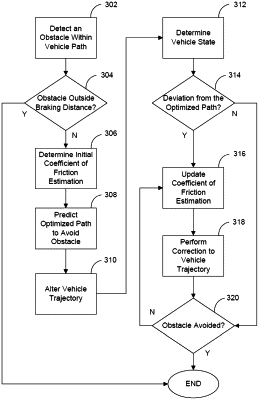| CPC B60W 30/09 (2013.01) [B60W 10/04 (2013.01); B60W 10/20 (2013.01); B60W 30/0956 (2013.01); B60W 2520/26 (2013.01); B60W 2552/40 (2020.02); B60W 2552/53 (2020.02)] | 20 Claims |

|
1. A driving control system for a vehicle comprising a vehicle control system configured to steer wheels of the vehicle, the driving control system comprising:
a plurality of sensors coupled to the vehicle; and
a controller in electrical communication with the plurality of sensors and the vehicle control system, the controller being configured to execute a program to:
(i) receive information about a location of an object from at least one of the plurality of sensors;
(ii) determine a sequence of control inputs to avoid a collision between the vehicle and the object based on the location of the object, and
(iii) cause the vehicle control system of the vehicle to perform a vehicle maneuver based on the sequence of control inputs,
wherein the sequence of control inputs to avoid the collision is determined by
(a) determining an optimized vehicle path to avoid a collision between the vehicle and the object based upon an initial coefficient of friction value between the vehicle and a road surface,
(b) determining a vehicle deviation from the optimized vehicle path,
(c) updating, based at least in part on a measured kinematic state of the vehicle, a coefficient of friction value responsive to the determination that the vehicle deviates from the optimized vehicle path, the measured kinematic state of the vehicle including one or more of a position of the vehicle, a yaw angle of the vehicle, a velocity of the vehicle, a yaw rate of the vehicle, and a steering angle of the vehicle; and
(d) causing the vehicle control system to perform a correction in the vehicle maneuver based on the updated coefficient of friction value.
|